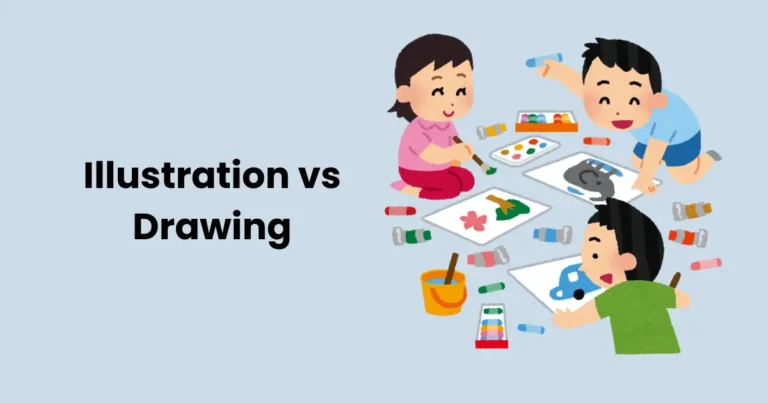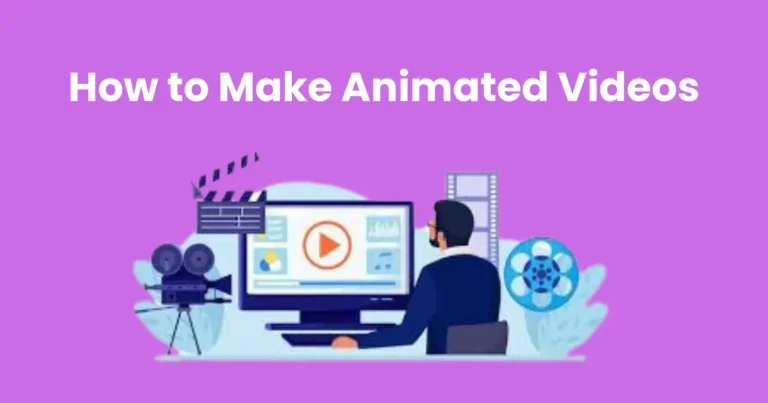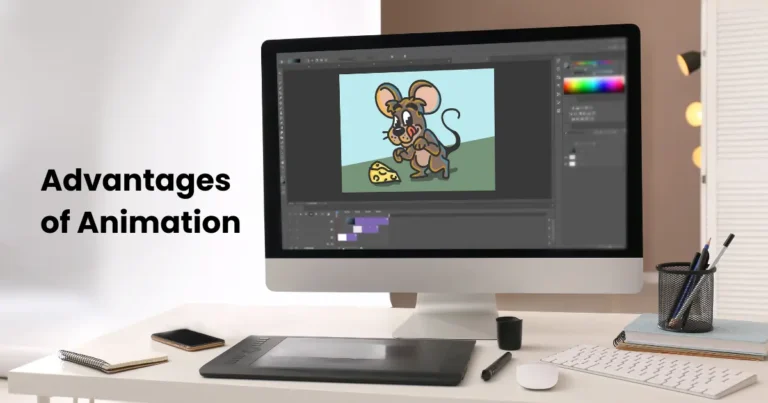2D vs 3D animation | Best Guide with key differences

Contents
- 1 What is 2D Animation?
- 2 What is 3D Animation?
- 3 Key Differences Between 2D vs 3D animation
- 4 Advantages of 2D Animation
- 4.0.1 1. Cost-Effective Production
- 4.0.2 2. Faster Production Timeline
- 4.0.3 3. Simplicity and Artistic Flexibility
- 4.0.4 4. Easy to Learn and Master
- 4.0.5 5. Nostalgia and Timeless Appeal
- 4.0.6 6. Strong Visual Storytelling
- 4.0.7 7. Wide Application Across Different Media
- 4.0.8 8. Ideal for Specific Aesthetics and Genres
- 5 Advantages of 3D Animation
- 5.0.1 1. Realistic and Immersive Visuals
- 5.0.2 2. Depth and Dimension
- 5.0.3 3. Greater Flexibility in Animation
- 5.0.4 4. Versatility in Application
- 5.0.5 5. Enhanced Detail and Texture
- 5.0.6 6. Easier to Make Changes and Adjustments
- 5.0.7 7. Future-Proof and Cutting-Edge Technology
- 5.0.8 8. Strong Appeal for Modern Audiences
- 6 Which One Should You Choose for Your Project?
- 7 Famous Examples of 2D and 3D Animation
In the world of animation, two distinct styles dominate the creative landscape: 2D vs 3D animation. Each has its unique characteristics, techniques, and applications, making them ideal for different types of projects. Whether you’re a filmmaker, animator, or business looking to incorporate animation into your marketing strategy, understanding the key differences between 2D Vs 3D animation is essential for making an informed decision.
2D animation, the traditional form of animation, involves creating characters and scenes in a two-dimensional space. It’s the style behind iconic cartoons like Looney Tunes and SpongeBob SquarePants. On the other hand, 3D animation has revolutionized the industry, enabling the creation of immersive, lifelike worlds, as seen in movies like Toy Story and Avatar.
In this article, we’ll dive into the fundamental differences between 2D and 3D animation, exploring their strengths, challenges, and when to choose one over the other. By the end of this guide, you’ll have a clear understanding of both animation techniques and be ready to determine which is best suited for your next project.
What is 2D Animation?
2D animation refers to the creation of moving images in a two-dimensional space, meaning they have height and width but no depth. This traditional animation technique has been a staple in the entertainment industry for decades, from early cartoons to modern-day digital animations. In 2D animation, characters, objects, and scenes are drawn or designed flatly, often creating the illusion of movement through sequential frames.
2D Animation Basics
The core principle behind 2D animation is that objects appear to move by showing a series of still images or drawings that are slightly different from one another. When played in sequence, these frames create the illusion of motion. This process can be done either by hand-drawing each frame (traditional animation) or using digital tools (computer-generated animation), but the results maintain the same two-dimensional appearance.
Types of 2D Animation
There are several techniques within the realm of 2D animation:
- Traditional Animation: Often referred to as hand-drawn animation, this technique involves drawing each frame by hand, a process that is both labor-intensive and time-consuming. Classic Disney films like Snow White and Cinderella are prime examples of traditional animation.
- Digital 2D Animation: With the advent of digital technology, animators now use software to create 2D animations. This method is faster and allows for greater flexibility in editing and reusing assets. Popular software includes Adobe Animate and Toon Boom Harmony.
- Vector-based Animation: Unlike traditional animation, vector-based animation relies on mathematical formulas to create shapes, which can be scaled infinitely without losing quality. This method is often used for web animations and graphics-heavy projects. Software like Adobe Animate or Flash is commonly used for vector-based animation.
What is 3D Animation?
3D animation is the process of creating moving images in a three-dimensional space, providing depth, volume, and a more realistic portrayal of characters and environments. Unlike 2D animation, where objects and characters appear flat, 3D animation brings scenes to life by simulating the natural movement of objects in a three-dimensional world. It allows animators to move and manipulate objects along the X, Y, and Z axes, providing a sense of realism and depth that is impossible to achieve with 2D techniques.
3D Animation Basics
In 3D animation, the creation process begins with building a 3D model — a digital representation of a character, object, or environment. This model is then rigged with a skeletal structure that allows it to move. After rigging, texturing is applied to give the model color, patterns, and surface details. Finally, the animation is brought to life through motion and lighting, creating a fully immersive 3D scene. The final product is rendered, a process that converts the digital 3D models into 2D images or videos, simulating real-world lighting, shadows, and textures.
Types of 3D Animation
Several different techniques fall under the umbrella of 3D animation, each suited for different types of projects:
- Modeling: The first step in creating a 3D animation, where a digital model of the character or object is created. These models are usually built in specialized software like Autodesk Maya or Blender.
- Rigging: Once the model is created, it needs a skeletal structure or rig that allows it to move. Rigging involves creating joints and bones, allowing animators to manipulate the model’s movements.
- Texturing: This stage adds surface details to the models, giving them realistic appearances. Textures can include skin, clothing, or environmental elements such as wood or metal.
- Animation: This is where the magic happens. Animators define the movement and actions of the 3D models, using keyframes to map out poses at specific points in time, while the software fills in the movement between them.
- Rendering: The final stage of the 3D animation process, where all the elements — textures, lighting, shadows, and movements — are combined and turned into the final video or image.
Key Differences Between 2D vs 3D animation
While both 2D and 3D animation share the goal of bringing characters and stories to life, the techniques and results are vastly different. Understanding the key differences between these two animation styles can help you decide which is better suited for your project. Below, we’ll explore the most significant distinctions in terms of visual appeal, technical requirements, and the production process.
Visual Differences Between 2D vs 3D animation

- 2D Animation:
- Flat and two-dimensional: In 2D animation, the characters and scenes exist in a two-dimensional space, which means they have height and width but no depth. This creates a flat look, where elements move along an X and Y axis.
- Simplified designs: Characters and environments are typically more stylized and simple, which gives 2D animations a more artistic, cartoonish feel.
- 3D Animation:
- Depth and realism: 3D animation adds a third dimension, allowing characters and objects to exist with depth, giving them volume and making them appear more realistic. This allows for more dynamic movements and sophisticated camera angles.
- Lifelike textures: 3D animation can incorporate realistic lighting, shadows, and textures, creating scenes that look more like real life.
Technical Differences
- 2D Animation:
- The technical requirements for 2D animation are generally less demanding. Animators primarily work with drawing software or vector-based tools, focusing on the creation of static images that are animated frame by frame.
- Tools like Adobe Animate, Toon Boom, and Adobe Photoshop are commonly used for 2D animation.
- 3D Animation:
- 3D animation involves more complex software and a detailed production pipeline. It requires the creation of 3D models, rigging, and texturing to bring the animation to life.
- Software like Autodesk Maya, Blender, and Cinema 4D is used to create and animate 3D characters and environments.
Production Process Comparison
- 2D Animation:
- The production process for 2D animation is typically simpler and faster than 3D animation. Artists can create scenes by drawing or designing each frame individually. Even digital tools that streamline the process, like Tweening (automatically generating intermediate frames), still keep the process less resource-intensive.
- The hand-drawn or vector nature of 2D animation makes it a more affordable option, especially for projects with smaller budgets or shorter timelines.
- 3D Animation:
- The production of 3D animation is much more resource-intensive and time-consuming. It involves a multi-step process, including modeling, rigging, texturing, and rendering, with each step requiring highly specialized skills.
- 3D animation tends to be more expensive due to the advanced software and skilled labor required, but it allows for more complex and visually rich outcomes.
Use Cases and Applications
- 2D Animation:
- Typically used in cartoons, web animations, mobile games, and advertisements, where the style is often simpler and less focused on realism.
- 2D animation also lends itself well to educational content, explainer videos, and interactive web media.
- 3D Animation:
- Primarily used in feature films, video games, and visual effects in movies, where the goal is to create immersive, lifelike worlds.
- 3D animation also works well for product visualization, architectural walkthroughs, and virtual reality experiences, where realism and depth are key.
These key differences can help guide your choice of animation style depending on your project’s objectives, budget, and desired outcome. While 2D animation offers charm and simplicity, 3D animation brings unparalleled realism and dynamic visuals.
Advantages of 2D Animation
2D animation remains a popular choice for many creators due to its unique qualities and benefits. Although it may lack the depth and realism of 3D animation, 2D animation offers several compelling advantages that make it the preferred style for various projects. Below, we’ll explore the key advantages of using 2D animation.
1. Cost-Effective Production
One of the primary advantages of 2D animation is its affordability. Compared to 3D animation, which involves intricate modeling, texturing, and rendering processes, 2D animation is generally less expensive to produce. The animation process is simpler, requiring fewer resources and less specialized equipment, which makes it an excellent option for projects with a limited budget.
2. Faster Production Timeline
The production timeline for 2D animation tends to be faster than for 3D animation. Since 2D animation doesn’t require the same level of complexity in terms of modeling and rigging, it can be completed more quickly, especially with digital tools that streamline the process. Animators can focus more on character design and movement, ensuring a quicker turnaround for projects.
3. Simplicity and Artistic Flexibility
2D animation is inherently simpler, which can be an advantage for projects that prioritize stylized visuals or artistic expression over hyper-realism. The simplicity of 2D allows animators to experiment with a variety of visual styles, from hand-drawn techniques to minimalist vector-based designs. This artistic freedom enables creators to make a bold visual statement without the constraints of realism.
4. Easy to Learn and Master
For aspiring animators, 2D animation offers a more approachable learning curve. Many animation students begin their training with 2D techniques because they can grasp the fundamental principles of movement, timing, and storytelling without the complexities of 3D modeling. Digital tools for 2D animation are also generally more intuitive, enabling beginners to get started with relative ease.
5. Nostalgia and Timeless Appeal
2D animation has a certain nostalgic charm that resonates with audiences of all ages. Classic hand-drawn animations like Looney Tunes, Tom and Jerry, and Disney’s Golden Age films evoke a sense of familiarity and fondness that many people associate with childhood. This timeless quality of 2D animation makes it an ideal choice for projects aimed at evoking a sense of nostalgia or warmth.
6. Strong Visual Storytelling
2D animation allows for clearer, more direct storytelling. Since 2D characters and environments are often simpler and less detailed, the focus remains squarely on the action, emotion, and narrative. The absence of intricate backgrounds or hyper-realistic details allows for a more focused, straightforward storytelling experience, which can be highly effective in conveying a message or emotion.
7. Wide Application Across Different Media
2D animation is versatile and can be used across a wide range of media formats. From television shows and movies to web series and social media content, 2D animation fits well in both traditional and digital platforms. It is particularly effective in marketing, advertising, and educational content, where quick, impactful visuals are required to engage audiences.
8. Ideal for Specific Aesthetics and Genres
2D animation is often the preferred style for certain genres and aesthetics. Whether it’s the classic cartoon style, anime, or even motion graphics for modern digital projects, 2D animation has the ability to create very distinct visual experiences. It’s also ideal for projects targeting younger audiences, where vibrant colors and simple, engaging characters capture attention.
In summary, 2D animation offers a range of advantages, from cost-effectiveness and faster production times to artistic flexibility and simplicity. Whether you’re creating a cartoon, educational video, or marketing campaign, 2D animation remains a go-to option for many creators due to its versatility, accessibility, and timeless appeal.
Advantages of 3D Animation
3D animation has transformed the entertainment, gaming, and advertising industries by providing visually stunning and highly realistic animations. While it may come with a higher price tag and more complex production processes, the advantages it offers are hard to ignore. Below, we’ll explore the key benefits of using 3D animation in your projects.

1. Realistic and Immersive Visuals
One of the most significant advantages of 3D animation is its ability to create highly realistic visuals. With the use of depth, shadows, and intricate textures, 3D animation can simulate real-world environments and objects in a way that is nearly indistinguishable from reality. This level of realism makes 3D animation particularly ideal for feature films, video games, and architectural visualization, where the goal is to create an immersive experience.
2. Depth and Dimension
Unlike 2D animation, which operates in a flat space, 3D animation brings objects and characters to life with depth and dimension. This allows for more dynamic camera angles, lighting effects, and scene compositions, making the visuals appear more lifelike. The ability to rotate and manipulate objects in a 3D space opens up creative possibilities that are simply not possible with traditional 2D techniques.
3. Greater Flexibility in Animation
With 3D animation, objects, and characters are rigged with skeletal systems that allow for realistic movement and deformation. Animators can adjust movements, poses, and expressions more freely and precisely than in 2D animation. Additionally, once a 3D model is created, it can be reused in multiple scenes or projects, saving time and resources on future animations.
4. Versatility in Application
3D animation can be applied across a wide range of industries, including:
- Entertainment: From animated films and TV shows (such as Toy Story and Frozen) to visual effects in live-action movies (like in Avatar), 3D animation plays a critical role in modern filmmaking.
- Video Games: 3D models and environments are essential for creating immersive, interactive worlds in video games, where players can navigate dynamic 3D spaces.
- Product Visualization: 3D animation is often used in product design and marketing, allowing businesses to showcase products in a realistic 3D environment before production begins.
- Virtual Reality (VR) and Augmented Reality (AR): The lifelike nature of 3D animation makes it ideal for VR and AR experiences, where the user interacts with 3D models in real-time.
5. Enhanced Detail and Texture
In 3D animation, it’s easier to add detailed textures to characters and objects, which significantly enhances their visual quality. Whether it’s the fabric of clothing, the sheen of a car, or the texture of a character’s skin, 3D animation allows for intricate details that make objects look more realistic. With the right lighting and shading techniques, 3D models can capture the subtle nuances of the real world, making the animation more convincing and visually appealing.
6. Easier to Make Changes and Adjustments
One of the practical advantages of 3D animation is that it allows for easier adjustments during production. Once a 3D model is created, animators can move, resize, or alter it without having to start over from scratch. This is particularly useful when working with complex scenes or characters, where changes may need to be made to the animation as the project evolves. In contrast, changes in 2D animation may require drawing new frames or adjusting the entire sequence.
7. Future-Proof and Cutting-Edge Technology
As technology continues to evolve, 3D animation remains at the forefront of the animation industry. With advances in rendering technology, lighting effects, and artificial intelligence, 3D animation is becoming increasingly sophisticated and capable of producing even more breathtaking visuals. Real-time rendering engines like Unreal Engine and Unity have pushed the boundaries of what can be achieved in animation, making 3D animation the future of many creative fields.
8. Strong Appeal for Modern Audiences
3D animation has a strong appeal among modern audiences, particularly in the realm of CGI (computer-generated imagery). With the rise of blockbuster 3D animated films, video games, and immersive experiences like VR, the demand for 3D animation has skyrocketed. It caters to viewers’ expectations for high-quality, visually dynamic content, making it a popular choice for projects aimed at engaging younger and tech-savvy demographics.
In conclusion, 3D animation offers numerous advantages, from its ability to create realistic, detailed visuals to its flexibility in application across various industries. While the production process can be more complex and costly, the results are often worth the investment, particularly for projects that require lifelike environments or dynamic, interactive experiences.
Which One Should You Choose for Your Project?
When deciding between 2D and 3D animation for your project, several factors must be considered to ensure that you choose the right style for your specific needs. Both animation techniques have their unique strengths and drawbacks, so the decision ultimately depends on your project goals, budget, timeline, and the type of audience you want to engage. Below, we’ll explore some key considerations to help you make an informed choice.

1. Budget and Production Time
- Choose 2D Animation if You Have a Limited Budget or Tight Timeline
If you’re working with a smaller budget or need to complete the project quickly, 2D animation might be the better option. The production process is generally less expensive and faster than 3D animation, making it ideal for projects that don’t require the complexity of realistic 3D visuals. Web series, cartoons, explainer videos, and advertisements are great examples where 2D animation excels without blowing the budget. - Choose 3D Animation if You Have a Bigger Budget and Ample Time
For larger-scale projects where budget is less of a constraint and the goal is to achieve a realistic or immersive experience, 3D animation may be the way to go. While it is more resource-intensive and time-consuming, 3D animation is ideal for feature films, video games, virtual reality (VR) experiences, and product visualizations. If you have the budget for cutting-edge technology and are looking to create detailed, lifelike animations, 3D is the best choice.
2. Visual Style and Creative Direction
- Choose 2D Animation for Simplicity, Artistic Expression, and Stylization
If your project requires a more stylized, artistic, or minimalist approach, 2D animation is the perfect fit. The simplicity of 2D allows for more creative flexibility, with a wide range of visual styles from hand-drawn animation to modern digital designs. Children’s cartoons, anime, and motion graphics often thrive in 2D, where the focus is on character expressions, fluid movement, and strong storytelling, rather than photorealism. - Choose 3D Animation for Realism, Immersion, and Complex Scenes
If your project demands realism, depth, and intricate scenes, 3D animation is the clear winner. The ability to work in a three-dimensional space adds dynamic lighting, shadows, and textures that are ideal for creating lifelike environments and characters. For projects like CGI movies, interactive video games, and architectural walkthroughs, 3D animation provides the detail and dimension needed to captivate audiences.
3. Target Audience
- Choose 2D Animation for Younger Audiences or Nostalgic Appeal
2D animation is often favored for children’s content, as its simple and colorful style easily grabs attention and is easy for young audiences to relate to. Classic cartoons and animated series have a timeless appeal and remain highly effective in connecting with a broad audience base. 2D is also a great choice for content that aims to evoke nostalgia and warmth, as it often carries a retro, hand-drawn charm. - Choose 3D Animation for a Modern, Tech-Savvy Audience
For audiences who expect cutting-edge visuals, particularly tech-savvy viewers, 3D animation is the best way to make a strong impact. Suppose your project is targeting teenagers or young adults. In that case, 3D is particularly appealing due to its association with high-quality visual effects and realistic depictions, as seen in popular animated films and video games. Moreover, 3D animation is crucial when targeting industries like gaming, virtual reality, and augmented reality where immersion and realism are key.
4. Type of Project
- Choose 2D Animation for Shorter, Simpler Content
For short films, social media videos, advertisements, or explainer videos, 2D animation is often the ideal choice. Its straightforward style makes it perfect for educational content, branding, and marketing campaigns where you want to communicate your message quickly and clearly, without the need for complex visuals. Additionally, 2D animation is perfect for projects where the focus is on clear storytelling and character-driven content. - Choose 3D Animation for Long-Form, Immersive Projects
If your project involves long-form content like a full-length animated movie, a 3D video game, or an immersive VR experience, 3D animation will provide the depth, realism, and complexity needed to sustain audience interest. 3D animation allows for complex worlds, detailed character interactions, and realistic physics, making it the go-to option for projects that demand a high level of detail and immersion.
Famous Examples of 2D and 3D Animation
Both 2D and 3D animation have played pivotal roles in the entertainment and media industries, bringing some of the most beloved and iconic characters and stories to life. Below, we’ll explore some famous examples of 2D and 3D animation that have shaped the world of animation and continue to inspire both creators and audiences alike.

Famous Examples of 2D Animation
- “The Simpsons”
Perhaps one of the most iconic animated series in television history, “The Simpsons” is a classic example of 2D animation at its best. Created by Matt Groening, this satirical family sitcom has been running for over 30 years and continues to be a significant cultural phenomenon. Its simple yet expressive characters, bold color palettes, and timeless humor have made it a staple of American pop culture. - “Looney Tunes”
The Looney Tunes franchise, featuring beloved characters like Bugs Bunny, Daffy Duck, and Porky Pig, is a hallmark of classic 2D animation. Originally created by Warner Bros. in the 1930s, the series has left an indelible mark on animation, with its slapstick comedy, catchy music, and memorable animation style. The series remains influential in both animation and comedy to this day. - “SpongeBob SquarePants”
“SpongeBob SquarePants” is another example of 2D animation that has captured the hearts of both children and adults. Created by marine science educator Stephen Hillenburg, the show blends quirky humor and vibrant animation with an underwater setting. Its distinct art style and characters like SpongeBob and Patrick have become pop culture icons. - “The Lion King”
One of Disney’s most beloved animated films, “The Lion King” (1994) is an example of hand-drawn, traditional 2D animation. The film combines stunning artistry with an unforgettable soundtrack, showcasing Disney’s mastery of 2D animation during the 1990s. The film’s emotional depth and vibrant visuals have made it a classic in animation history. - “Dragon Ball Z”
A hugely popular anime series, “Dragon Ball Z” exemplifies the energetic and dynamic action sequences that 2D animation can achieve. With its intense battles, distinctive character designs, and cultural influence, “Dragon Ball Z” has become one of the most famous examples of 2D animation in the anime genre, beloved by fans worldwide.
Famous Examples of 3D Animation
- “Toy Story”
“Toy Story” (1995) by Pixar Animation Studios is often credited with revolutionizing the animation industry as the first feature-length film created entirely through 3D animation. The groundbreaking film tells the story of a group of toys that come to life when humans aren’t around. With its realistic textures, lifelike character movements, and emotional storytelling, “Toy Story” set the stage for future 3D animated films. - “Avatar”
Directed by James Cameron, “Avatar” (2009) is a landmark in 3D animation and visual effects. The film used cutting-edge technology to create the lush, alien world of Pandora and its inhabitants. With its groundbreaking use of motion capture and stereoscopic 3D, “Avatar” set new standards for immersive cinematic experiences and remains one of the highest-grossing films of all time. - “Frozen”
Disney’s “Frozen” (2013) is another prime example of 3D animation that captured the hearts of audiences worldwide. The film combines stunning visuals with emotional storytelling, particularly through the character design and animation of Elsa, whose ice powers come to life through detailed 3D effects. The film’s success led to a franchise, including a sequel, “Frozen II”, in 2019. - “Shrek”
“Shrek” (2001), produced by DreamWorks Animation, brought a unique and comedic twist to the world of 3D animation. The film’s innovative animation, quirky characters, and humor appealed to both children and adults, cementing it as a modern classic. Shrek also pushed the boundaries of 3D animation in terms of character expressiveness and environmental details, making it a standout film in the early 2000s.
Conclusion
In the world of animation, both 2D and 3D animation offer unique advantages that make them ideal for different types of projects. 2D animation excels in simplicity, artistic expression, and timeless appeal, making it the perfect choice for projects that require a more traditional or stylized look. On the other hand, 3D animation is unmatched when it comes to creating realistic, immersive experiences that captivate modern audiences. Whether you’re creating a charming children’s cartoon or a visually stunning blockbuster film, both techniques provide limitless creative possibilities.
Ultimately, choosing between 2D and 3D animation depends on your project’s goals, budget, and the kind of experience you want to deliver to your audience. As we’ve seen with iconic examples from “The Simpsons” to “Toy Story”, both animation styles have made an indelible mark on the entertainment industry. By carefully weighing the strengths and weaknesses of each technique, you can determine which one best fits your vision and bring your animated ideas to life.






